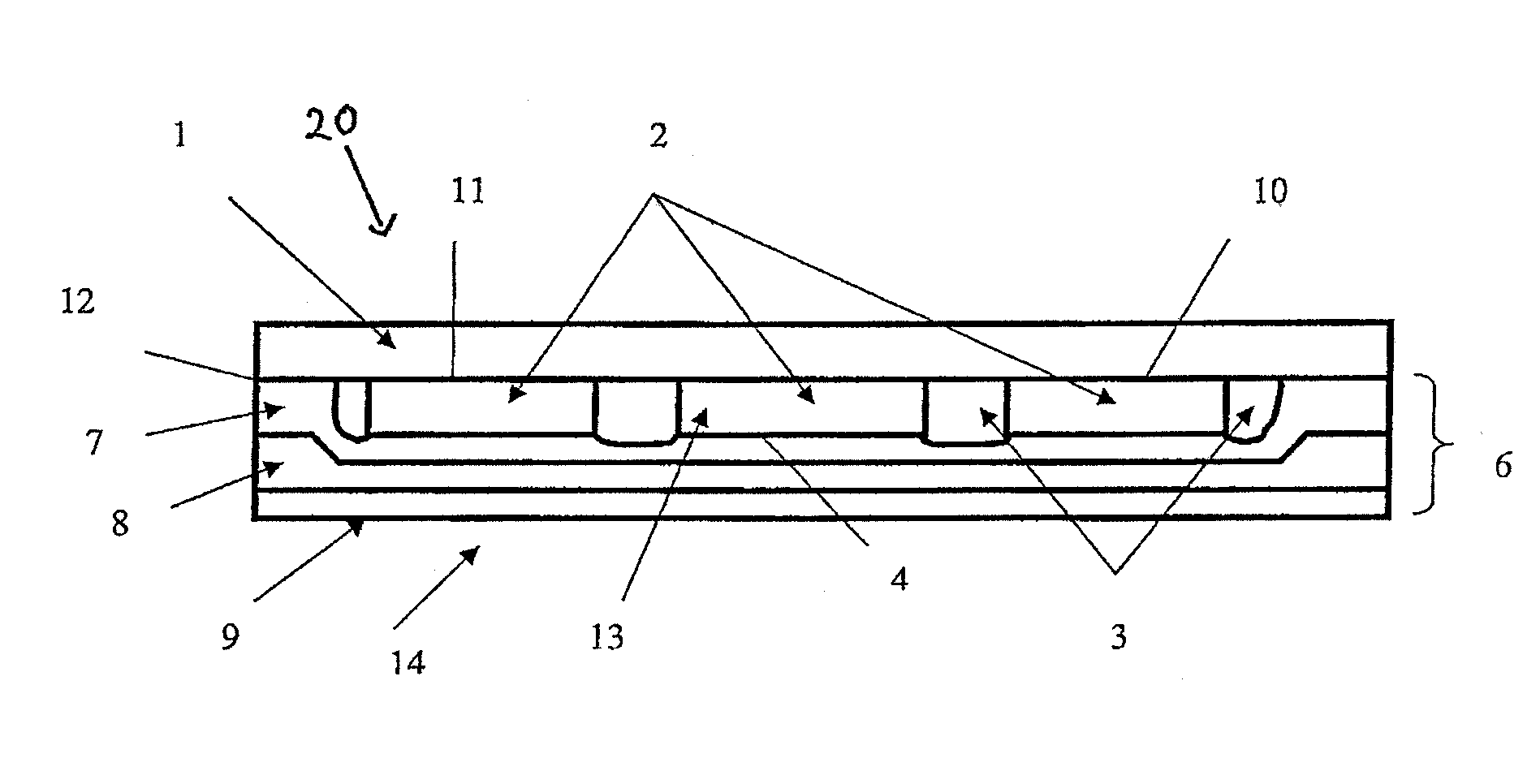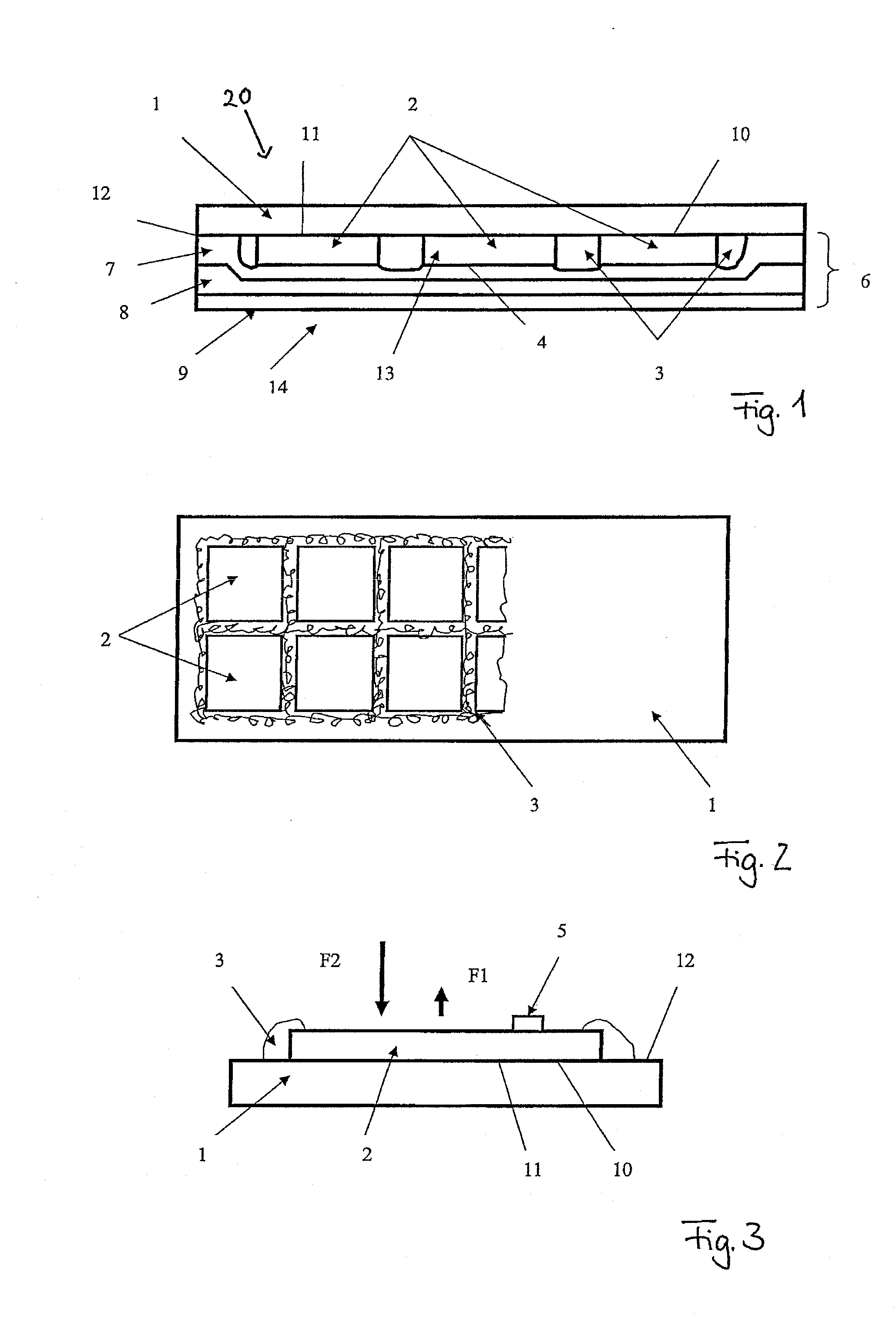Photovoltaic module with at least one crystalline solar cell
a technology of photovoltaic modules and solar cells, applied in the direction of photovoltaic energy generation, basic electric elements, electrical apparatus, etc., can solve the problems of solar cells that cannot be re-assembled, individual solar cells or modules fail, and approximately 30% of the cost of the process arises, so as to improve the mechanical and chemical properties, improve the effect of optical, mechanical and chemical properties
- Summary
- Abstract
- Description
- Claims
- Application Information
AI Technical Summary
Benefits of technology
Problems solved by technology
Method used
Image
Examples
Embodiment Construction
OF EMBODIMENTS OF THE INVENTION
[0032]The invention will be explained in more detail below on the basis of examples of embodiments and with reference to the figures of a drawing, in which:
[0033]FIG. 1 shows, from above, an arrangement comprising a carrier substrate for a photovoltaic module and a plurality of crystalline solar cells arranged thereon;
[0034]FIG. 2 shows, in cross section, a detail of the arrangement of FIG. 1; and
[0035]FIG. 3 shows, in cross section, a photovoltaic module using the arrangement of FIG. 1.
[0036]FIG. 1 shows, from above, an arrangement comprising a carrier substrate 1 for a photovoltaic module 20 and a plurality of solar cells 2 arranged thereon and of a so-called crystalline type. The solar cells 2, which comprise a crystalline photoactive material, are arranged flat next to one another at a small distance of approximately 2 to 3 mm. Once the solar cells 2 have been positioned, a respective edge seal 3 is applied around the solar cells 2. With this struc...
PUM
 Login to View More
Login to View More Abstract
Description
Claims
Application Information
 Login to View More
Login to View More - R&D
- Intellectual Property
- Life Sciences
- Materials
- Tech Scout
- Unparalleled Data Quality
- Higher Quality Content
- 60% Fewer Hallucinations
Browse by: Latest US Patents, China's latest patents, Technical Efficacy Thesaurus, Application Domain, Technology Topic, Popular Technical Reports.
© 2025 PatSnap. All rights reserved.Legal|Privacy policy|Modern Slavery Act Transparency Statement|Sitemap|About US| Contact US: help@patsnap.com


